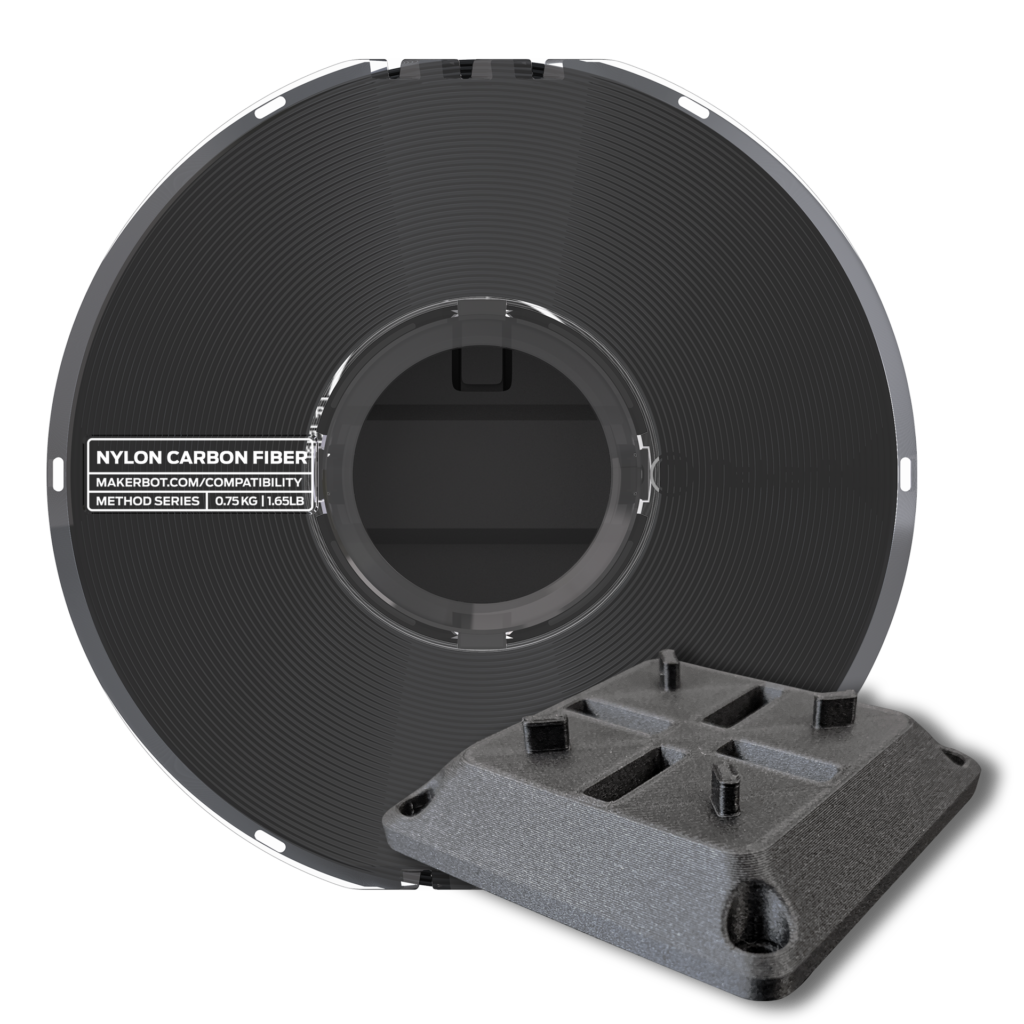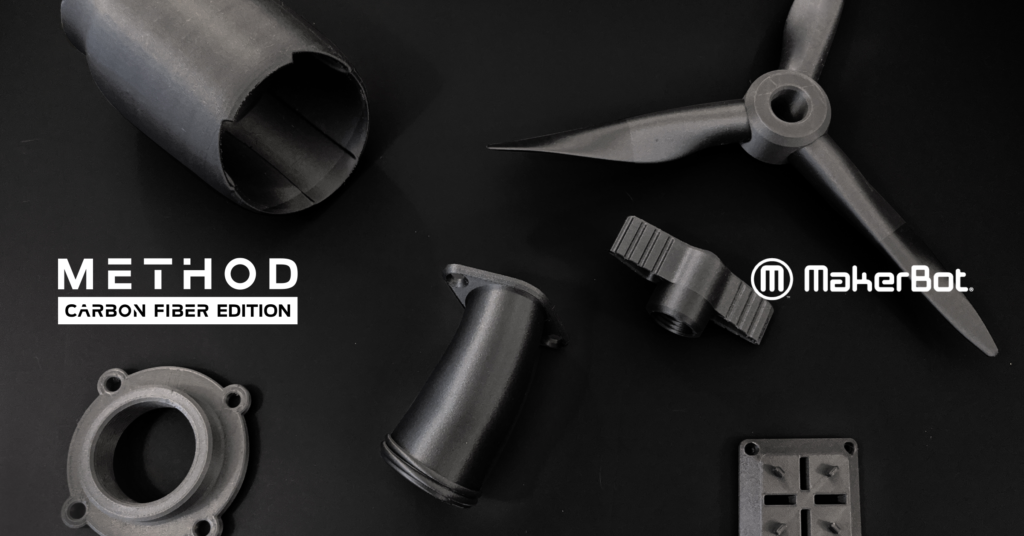With MakerBot’s most recent makeover, the Stratasys subsidiary promised new quality with its desktop 3D printers through the introduction of the METHOD and, later, METHOD X 3D printers. The company has gradually broadened the material possibilities of these machines with the release of specialty extruders, including the LABS Experimental Extruder that opened up the system to the use of third-party filaments.
The latest releases from the company are the METHOD and METHOD X Carbon Fiber Editions, which are capable of printing with nylon reinforced with chopped carbon fiber. This is made possible by the use of a new extruder meant for abrasive materials. The extruder features hardened metal drive gears, a metal filament switch, and an interchangeable hardened steel nozzle. This extruder is available as an upgrade to existing METHOD and METHOD X 3D printers.
The ability to 3D print with thermoplastic filaments filled with chopped carbon fiber is not exactly new, as these materials have been available on the market for some time. However, not every extruder is capable of printing them effectively without issue. Given MakerBot’s more measured approach to materials in the past few years, it would make sense for them to ensure that the product is well-suited for the task it is set out to accomplish. After all, these are closed systems marketed as easy-to-use and aren’t meant for tinkering.
The company suggests that nylon-carbon fiber parts printed on these systems can be used for manufacturing tools, jigs and fixtures, as well as end parts, including metal replacement parts, depending on the application. Specifically, MakerBot lists such use cases as vehicular brackets, inspection gauges, robotic end effectors, and other tools and under-hood applications.
The new extruder may not give it quite the same capabilities as printers dedicated to fiber reinforcement, such as products from Markforged, Anisoprint, Desktop Metal or 9T Labs. These technologies are able to incorporate strands of continuous carbon fiber into parts in order to provide anisotropic strength throughout the part. However, it is an upgrade for the METHOD line. This allows it to compete more closely with a brand like Ultimaker, which offers a PETG filament reinforced with chopped carbon fiber.
The METHOD line has its own unique features that distinguish it from other systems. Specifically, a circulating heated chamber controls the printing temperature throughout the build process in order to maintain accurate dimensionality. Combined with soluble supports printed using Stratasys SR-30 filament, it’s possible to create complex geometries, often not possible with continuous carbon fiber systems.
The company plans to add more composite materials to its lineup, with the METHOD X capable of handling a wider range due to the fact that its build platform can reach 110°C. The new Carbon Fiber Editions, along with the extruder and materials, are expected to begin shipping June 2020.
Subscribe to Our Email Newsletter
Stay up-to-date on all the latest news from the 3D printing industry and receive information and offers from third party vendors.
Print Services
Upload your 3D Models and get them printed quickly and efficiently.
You May Also Like
Johns Hopkins University Researchers Develop HyFAM Technology
Two scientists from Johns Hopkins University, Nathan C. Brown and Jochen Mueller, have developed a hybrid manufacturing technology they call HyFam, or Hybrid Formative Additive Manufacturing. Their work on this technology...
3D Printing G-Code Gets an Upgrade: T-Code
Good old G-Code still manages many 3D printers, great and small. Just like the STL, it’s a standard that enables collaboration while also holding the additive manufacturing (AM) industry back....
AM Rewind: The Biggest News and Trends of 2024
After a sluggish 2023, driven by persistent inflation and geopolitical tensions, 2024 has seen some recovery. Economic growth climbed from about 2.8 percent in 2023 to a modest 3.2 percent...
Metal Wire 3D Printer OEM ValCUN Announces Plans for 2025 Expansion
ValCUN, a Belgian original equipment manufacturer (OEM) of wire-based metal additive manufacturing (AM) hardware, has announced that the company has entered the next phase of its growth trajectory, making key...




































